
A snapshot of King and Bay in the 1970s
King and Bay in the heart of the Toronto financial district is one of the most modern intersections in the city. Unlike King and Yonge a block to the east, the intersection is dominated by glittering 1960s and 70s high-rise bank towers.
The decade would see the rise of Commerce Court West and crisp white First Canadian Place, which shifted the focus away from architect Mies van der Rohe's wonderfully dark TD Centre. This is a period when Toronto's skyline underwent profound changes, adding new bank towers and skyscrapers practically every year.
The photos below chart King and Bay's sudden skyward trajectory, starting in 1970.
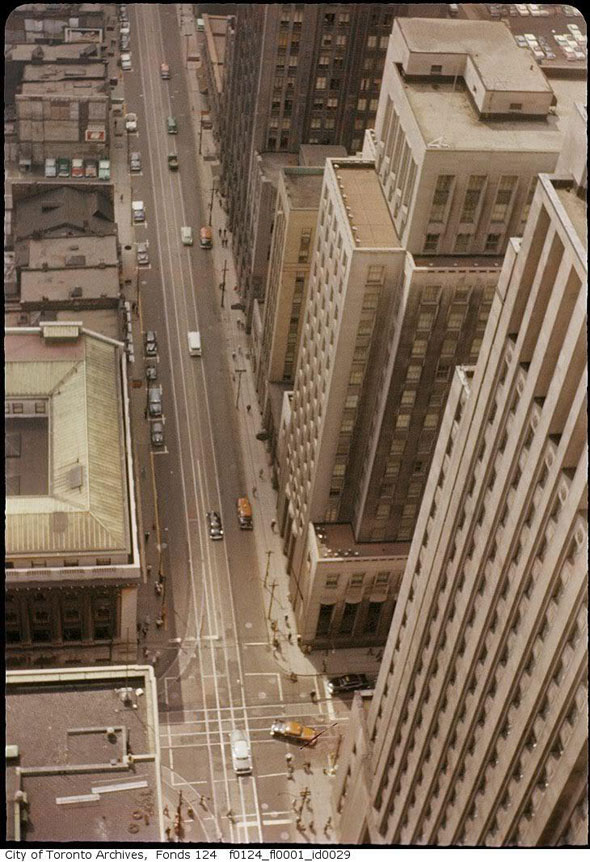
The lay of the land in the 1960s, before the rise of the bank towers. The building on the left of the photo with the green-ish roof is the headquarters of the Toronto-Dominion Bank that was razed to make way for TD Centre. Opposite that are the Toronto Star and Bank of Montreal buildings that were cleared for First Canadian Place in the 1970s.
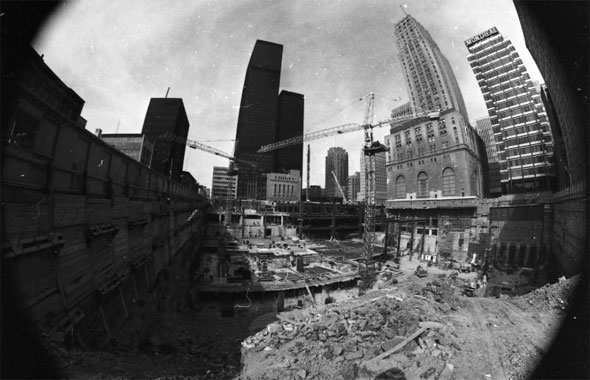
Commerce Court West was the first high rise of the post-TD Centre era. Architect I. M. Pei originally gave the tower a flared base that, had it been included in the final blueprint, would have brought the base of the tower flush with the sidewalk on Bay St. This fish-eye view, taken by Toronto Telegram photographer Norm Betts, looks west over the excavation site towards King and Bay.
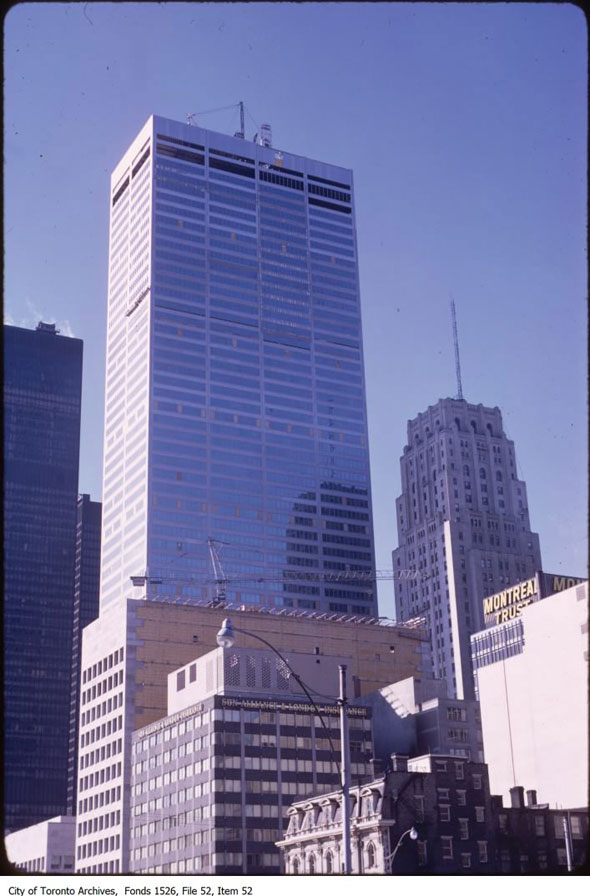
Commerce Court West nears completion. The tower was the tallest building in Canada for five years before it was pushed into second place in 1976 by First Canadian Place. Before the CN Tower rendered it obsolete, the tower had an 57th-floor observation level. Guests were enticed to pay the 50-cent admission fee by panoramic views of the city, a tropical bird collection, and lush music piped over a stereo.
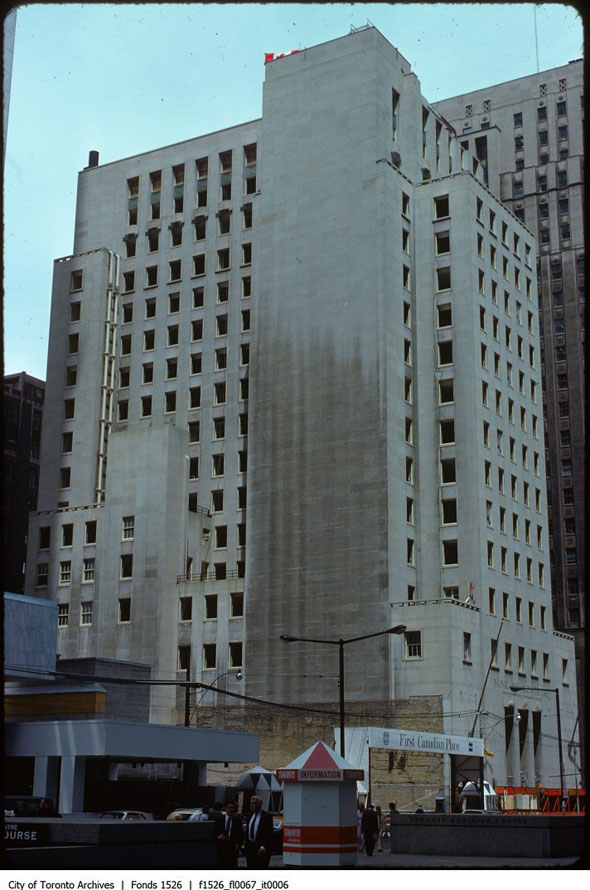
The main tower of the First Canadian Place complex was completed before the banking pavilion at the corner of King and Bay. The picture looks northeast across the FCP construction site opposite TD Centre to the back of the original Bank of Montreal building at King and Bay. Is was demolished to make way for the FCP banking pavilion after the main tower was completed.
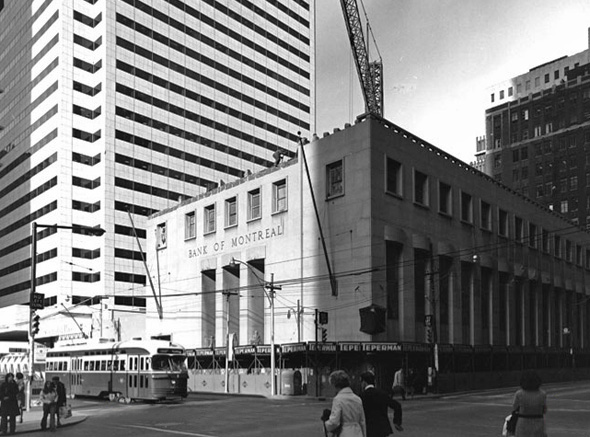
The original Bank of Montreal office during demolition. The FCP tower, visible in the background, replaced an art deco skyscraper once occupied by the Toronto Star.
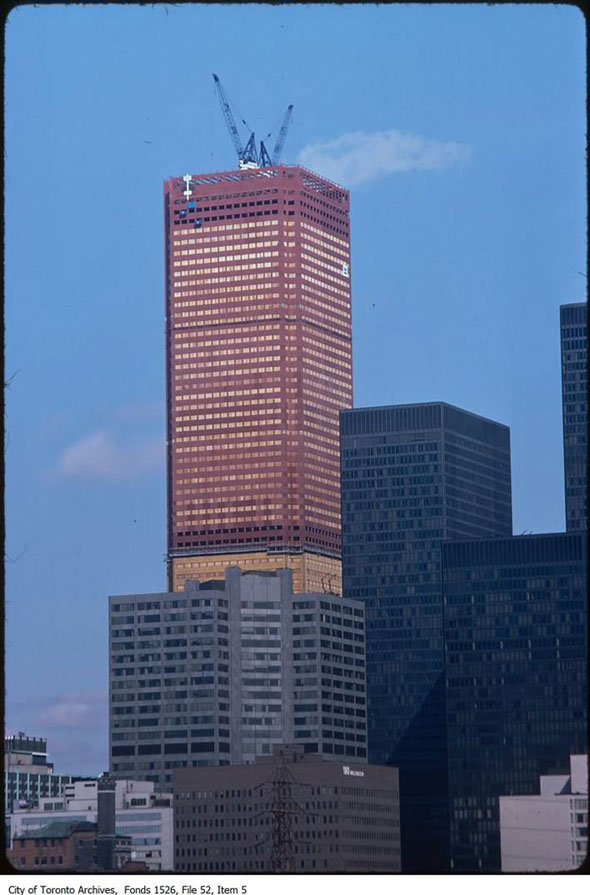
First Canadian Place nearing completion in March, 1975. The tower was broken into four zones during construction. The lower floors were constructed, decorated, furnished, and opened to Bank of Montreal staff while the upper zones were still a steel skeleton. FCP became the tallest office building in Canada on January 13, 1975, a title it retains to this day.
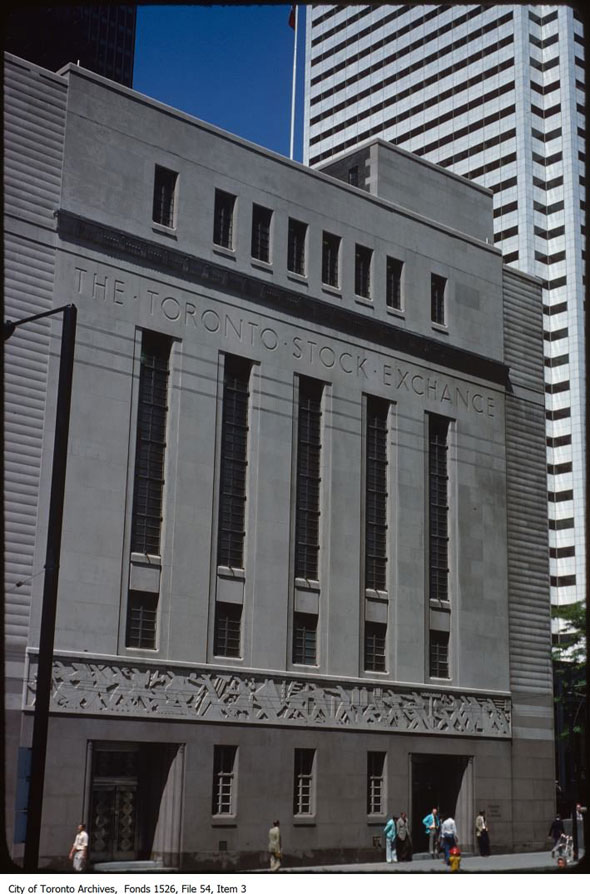
The 1937 Toronto Stock Exchange building before it was absorbed into a westward extension of TD Centre. The moderne structure is best known for its exterior frieze by artist Charles Comfort that depicts "a processional of industry." The TSE quit the building in 1983 and the structure was partially absorbed by TD Centre in 1992.
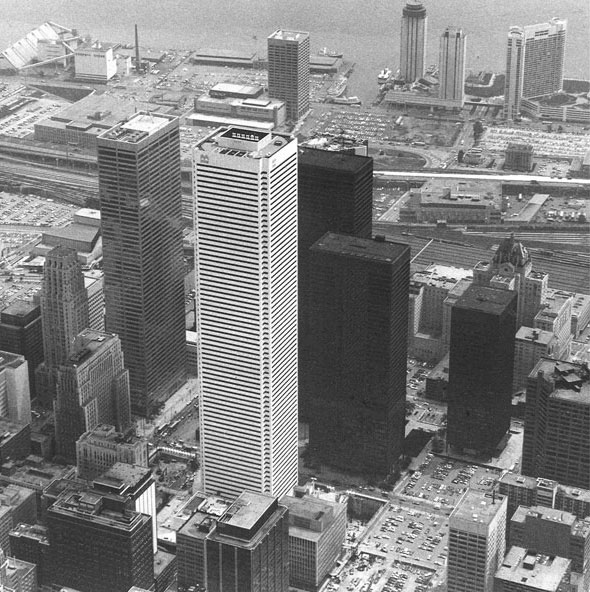
The finished product, c. 1976. Scotia Plaza, the Bank of Nova Scotia's contribution to the financial district's tangle of skyscrapers, was added in 1988. TD Bank didn't like it, though: the bank waged a public war against the tower in the local press.
Chris Bateman is a staff writer at blogTO. Follow him on Twitter at @chrisbateman.
Images: City of Toronto Archives (as marked;) Commerce Court fish-eye: Toronto Telegram fonds, F0433, ASC06616; Brookfield Properties.
Latest Videos
Latest Videos
Join the conversation Load comments







